Science Of Movement
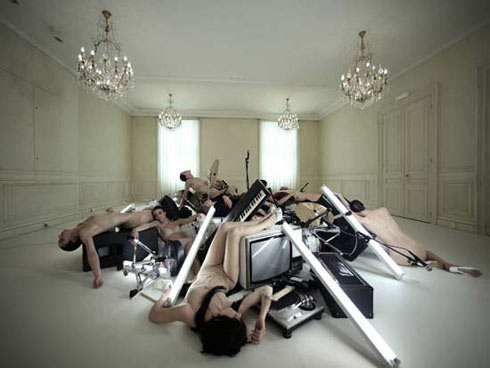
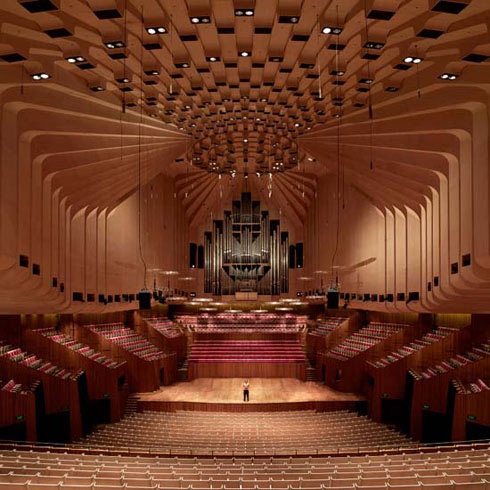
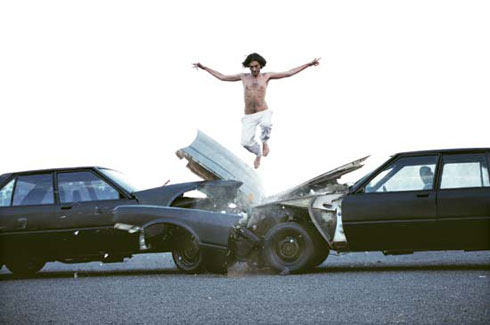
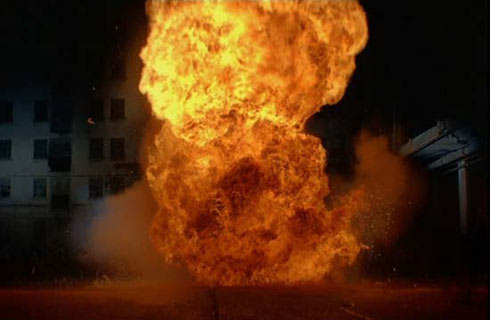
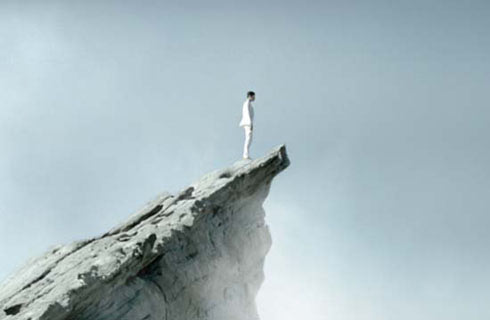
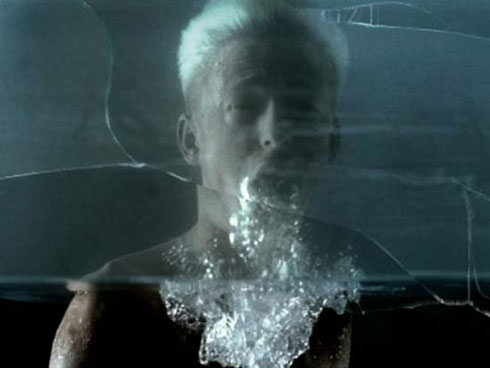
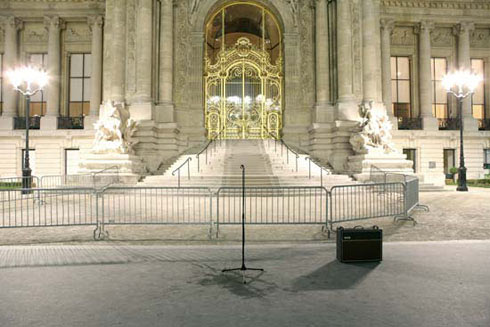 Text: Oliver Georgiou Images: Collider
Text: Oliver Georgiou Images: Collider
At first glance it would be close to impossible to tell that any of Sydney based Collider’s work was made in Australia. From humble beginnings in co-founder Daniel Askill’s bedroom at his mother’s home in Sydney at the turn of the century, he and partners Andrew Van Der Westhuyzen and Sam Zalalns have built their very own design and film media empire. Catering to a huge spectrum of clients including BMW, Hummer, Cadbury, UNKLE, Placebo, Dior, Nike and Lexus – Collider are producing work with an authentic A-grade international edge. Oliver Georgiou caught up with Daniel Askill over the phone to get the inside word on how it’s all happened…
Oliver Georgiou: You have a background in musical composition and come from a really musical family. Do you draw a lot of parallels between the composition of music, design and film?
Daniel Askill: Definitely, I have always been really interested in music and I guess particularly kind of twentieth century art music and classical music as well as of course modern music and popular music. I guess a lot of that influence came from my dad – he was a percussionist so we were always around a lot of music growing up. I particularly like minimal music, Steve Reich and people like that, and I think those sort of repetitious, slowly evolving, stripped back rigorous musical compositions are something I am definitely interested in and certainly does influence me from time to time with things visually, whether it just be what I’m listening to when I am writing a treatment or something. I still dabble writing out bits and pieces of music now and then.
OG: While studying design at Central Saint Martins in London you landed your first agency work as a creative director for some pretty high profile clients. How did the opportunity come about?
DA: I was traveling in Europe like most people do when I finished school and I met this guy when I was at some hostel in Hungary, this was when I was 18 or 19, he was from London and when I first got to London later on to do the studying, I went to crash on his floor the first night. He was working in web, this was around the web, multimedia kind of boom that happened back in the late 90s early 2000s. He was like “you should go meet this guy”. I had just started my thing at Saint Martins and I went and saw him basically thinking I would get some hack Photoshop work or something to just give me some pocket money while I was studying. They were this new multimedia company like a lot of new multimedia companies at that stage just kind of taking whatever they could, some things they understood how to do and some things they didn’t.
They had just happened to land a few video jobs out of the blue and it wasn’t something they had really had a lot of experience in, they had seen a couple of short films that I had done when I was back in Sydney. They said look why don’t you try directing, I think a perfume thing for Dunhill was the first thing. The next thing I knew I was directing jobs for them. I think they probably knew as little about what they were doing as I did. One thing led to another and other coincidences like their offices happened to be below Alexander McQueen’s and I started working a bit upstairs doing some graphic design. It was definitely a one thing that led to another kind of situation that really just came out of trying to find some piecemeal work to get me through studying. It’s lucky for me that they were willing to take a risk on someone that didn’t really know what they were doing.
OG: Creating your own production studio is a very time and labour intensive adventure to embark on. How have you managed to save yourself from being spread too thin over all of the whole business idea as opposed to the creative work that you are doing?
DA: When we first started we were really just happy for any work we could get to be honest so at the beginning it never felt like we were spreading ourselves thin because we literally started out of my bedroom at my mum’s place. It was myself, a friend from university and another guy Sam, he never had any interest in being a creative in the business. Andrew is a designer and I come from a design background and then moved into film but Sam was always there to look after the business side of it and that how it was always set up, so Andrew and I could always just focus on the creative side while Sam dealt with the management, getting accountants and bookkeepers and all that sort of stuff. I think that kind of help to make sure it slowly evolved in an organic way, because those roles where decided from the start.
OG: Your 2004 film We Have Decided Not To Die was a huge commitment for you and for Collider and seems to have paid off very well in terms of broadening horizons and affirming your talent. At any stage during production did you ever feel that this risk could potentially blow up in your face?
DA: I always had some sort of weird faith in it for sure you know, sometimes those ideas that you get you just think, one way or another I’ve just got to make this thing and it seems impossible because none of us had done anything like that before but at the same time there was some feeling like it was meant to be in some little way. But absolutely through the day-to-day processes since it was the first serious bit of filmmaking I ever did. So yeah it was a stress all the way along. Working on things particularly something you are so close to personally every step along the way I felt like aaahh what’s going on. But bellow all of that there was definitely some sort of sense of it ‘it will work out one way or another and it was probably combined a bit with the excitement of the fact that we had only really just started Collider so it seemed like something for everyone to gather round a bit at that stage. More than anything we were lucky to have the support of the Australian Film Commission financially which certainly helped.
OG: During that production and also on many other projects I notice that you like to work with high-speed cameras, in a way, breaking movement down to an almost scientific level, where it can be studied by the viewer. Has working intensively with this kind of medium changed the way you look at day-to-day things?
DA: That’s a funny question, I was thinking yesterday I don’t know why it is I‘m so obsessed with slow motion footage. Recently over the last couple of years those sort of cameras and those sort of techniques have just proliferated so much that they have become almost common place. For me I really like that whatever mode that kind of speed takes you into, it’s like my interest in minimal music. I’ve done other stuff that is a bit more fun and poppy, but the slow motion stuff I love kind of does end up transferring to every day life. I find that when I look at slow motion footage now it doesn’t even feel that slow, it feels almost like normal speed in a funny way once you have been looking at it for so long. I do really like those minimal slow burning things what I love more than anything with the idea and it’s kind of where I come at film making from is the idea that film making is something that if you want it to really allows you to see the world and things in a way that you could never experience them with your naked eye or with your own ears, it is a bit scientific in that way. I know a lot of people make films that are about the everyday and about the small idiosyncrasies of humanity and that’s all relevant as well, but for me it’s much more interesting to use it in a way so as you can see things that you couldn’t see otherwise.
OG: Recently I was talking with a friend about how we have got to a point where creating something realistic with effects just doesn’t have the WOW factor anymore and how people are now once again showing interest in effects shot on camera. One image that tells a lot about your process is the picture of a huge rig in the desert with Hummer parts hanging off it after the car had exploded. Was it your decision to shoot instead of generating the image in CG?
DA: That was quite insane and I remember that trying to push that job over the line was really difficult because I had everyone telling me we should just do it CG or do a miniature or something, but there was just something about that job that just felt like if we could try and do it in camera that there would be something so much more visual about it and I’m really glad we did do it that way in the end. I knew it would be fun to watch on the day even if it didn’t work. We built this massive rig out in the desert and built two scale model Hummers out of fiberglass and ripped them apart with bungee cords. When it was finished, it’s so funny on those kinds of shoots, sometimes the most interesting stuff is the stuff that doesn’t actually end up in the spot, but one of the most beautiful images I have from that project it the moment after the explosion and out in the middle of this desert this massive scaffold rig with all these pieces of fiberglass just dangling in the air like children’s mobile, it was quite an interesting image. I’ve always thought I want to do something with all those bits of footage that you end up with in the rushes of jobs that are more about the process than the actual job but are often much more interesting than the job itself.
OG: What is your first move when a pitch comes knocking on Collider’s door. Do you choose a team? Do you all get involved? Is there a process that you follow? Or is it different every time?
DA: It absolutely changes from project to project, quite often a project will come in for a specific person, like it will be something for Andrew to design or something for me to direct or something for Joel to direct, but then often there will be project that naturally led to some sort of collaboration and we also do a lot of post work in-house as well so someone might direct something then Andrew might take over as a design director during post production phase or he will come up with some style frame for a project that I will then go onto direct. There will usually be some person leading the project but more often than not there will be some cross-pollination that happens along the way.
OG: I have been looking at so many of the clips and images on Collider’s website and they all have a running style and feel, you definitely have a personal identity as a production studio.
DA: That’s something we always wanted to have, but we never wanted to define what it was and hoped that it came out naturally. It just ends up being a result of the sensibilities of the people that work here and the people who are attracted to working with us.
OG: You have traveled to many places and I understand these days your time is kind of split between New York and Sydney?
DA: It has been over the last two years but I’ve been back here since about August. It’s been nice spending some time back here but I have been sort of in New York over the last couple of years, I have separate representation overseas, for instance, Hummer actually went through Radical Media in the states, so on that job for instance, Collider wasn’t so involved in but then there was another car commercial I did recently for Renault that happened the same way but then all the post production came back to Collider and Andrew was very involved. It’s really an organic and obviously whenever possible the idea is to have everyone at Collider involved with everything as much as possible.
OG: The Phoenix clip that you created with your brother Lorin for the track ‘Rally’ was a series of images in sequence shot on the road while you toured with them in Japan. Did you set out intending to make a clip or did it just happen?
DA: That was another one of those projects that evolved in a funny way. I had done another video for them earlier and they had this idea actually to do a documentary about their album of the time. There was quite a small budget so it just made sense for Lorin and I to basically grab a few cameras and go on tour with them for a little bit. That started in Japan along the way it became clear that maybe there wasn’t a documentary in it or there wasn’t money to finish the documentary but there was this ideas for this video. What had started as a low-fi documentary turned into the music video. A lot of that really sprung from the simple idea of using my brother’s, we have always played a lot with digital still animation, I’m sure a lot of people have but the idea was to just keep the finger down on the motor drive and film them with the stills cameras as if we were shooting them with a moving camera. It ended up a amount of massive data with a zillion stills, we would come back every day and it kind of just evolved very organically like that.
OG: One fairly recent project that Collider was involved in that had a pretty well rounded line up of Australian design, music and motion graphics was The Presets ‘Are You The One?’ remix clip. With Modular, BMW, The Presets, Jonathan Zawada and his Trust Fun partner Shane Sakkeus and Collider involved, was everyone giving input the whole way or were there points where the projects changed hands from group to the next?
DA: I was actually away for a large amount of time when that was getting done. That clip came out of being friends with Jonathan for a while, I really respect what he does. I think that came out of him and my partner Andrew who is good at the design kind of things chatting, there was this project and Jonathan has obviously got fabulous visual sensibility and design skill but probably need the support of a 3D department and understanding. We have got a bunch of guys that work in here in Maya in 3D, so I think and I hope I am telling the story right that it made sense that they just come into Collider and work with our 3D department. They came in with a whole bunch of style frames and ideas and probably chatted to Andrew for a bit, he set them up with our 3D department and they basically directed them, and yeah that’s how that one sort of happened.
OG: I assume that you are working on some projects that you either can’t or don’t want to talk about, what are some of the projects that you are working on at Collider right now?
DA: We are going through a bit of a stage where we are trying to get back a bit to our own projects, getting back to the We Have Decided Not To Die days. I’m always tentative to talk about this stuff because I will still be talking about it in another few years but Andrew finished a book recently called Cabal that he is in the process of preparing for an animated short film, I think It is something that he will try to get funding for shortly. I have just finished a treatment for a feature film with my little brother, that’s just at the very first stages of beginning to put that in front of people to see if we can round up funding for also. Beyond that there is all the day to day stuff, Andrew is working on an IBM project, I’m pitching on a BMW job and something for These New Puritans in the UK, that’s a music video. Joel, one of our other directors is directing an American job at the moment that has come out here that we’ll be doing the post on and yeah, so bits and pieces.
Collider
Next Article: Bridezilla – Save The Last Dance



